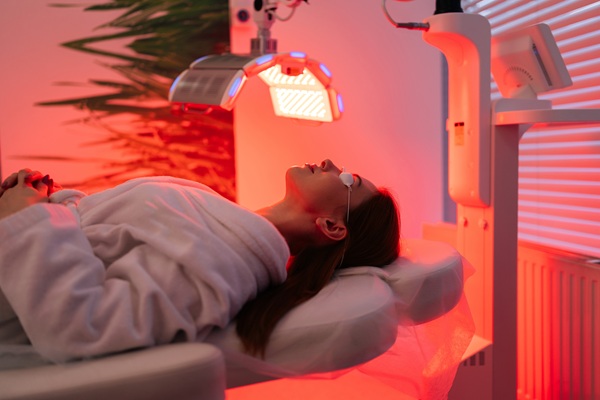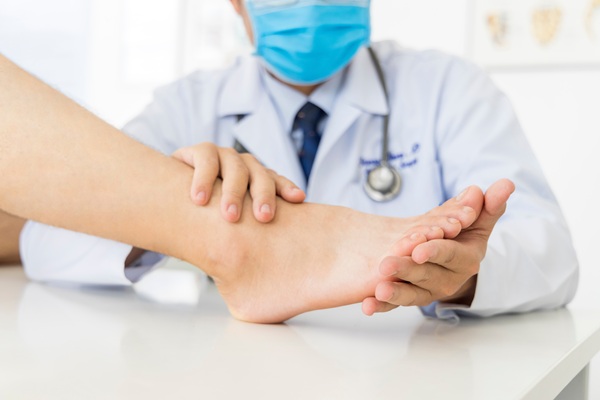Regenerative MedicineAustell, GA
Regenerative medicine represents a groundbreaking approach in orthopedic care, offering innovative solutions for patients experiencing chronic pain, injuries, or degenerative conditions. This advanced treatment taps into the body’s natural ability to heal itself, using cutting-edge techniques to repair damaged tissues and restore function. As a non-surgical alternative, regenerative medicine provides hope and relief for individuals seeking to enhance recovery and improve their quality of life.
Delta Orthopedics commonly incorporates regenerative medicine as part of our treatment offerings, emphasizing its ability to stimulate tissue repair and regeneration. Whether addressing joint pain, soft tissue injuries, or the effects of arthritis, regenerative medicine is changing how orthopedic care is delivered. Contact our Austell office by calling 678-439-5216 and schedule an appointment.
Understanding Regenerative Medicine
According to an article in the National Library of Medicine published by Cureus, a journal of medicine, regenerative medicine is a forward-thinking field in orthopedic treatment focusing on healing and restoring damaged tissues and organ functionality. Utilizing the body’s natural processes, this form of medicine addresses pain, inflammation, and dysfunction at their root. The orthopedic doctor may use specialized treatments such as platelet-rich plasma (PRP) injections, growth factors, and other biologically active substances to encourage cellular growth and tissue regeneration.
Unlike traditional methods that primarily aim to manage symptoms, regenerative medicine targets the underlying causes of discomfort. This strategy allows for faster recovery times, improved function, and long-term relief. The emphasis is on helping the body heal from within, optimizing its natural repair mechanisms to restore health and mobility. Moreover, regenerative medicine has proven particularly effective for a wide range of musculoskeletal conditions, including injuries to joints, tendons, and ligaments. Working alongside the body’s natural healing abilities provides an effective alternative to more invasive treatments, such as surgery, and has become a preferred choice for many patients.
“Utilizing the body’s natural processes, this form of medicine addresses pain, inflammation, and dysfunction at their root.”
Why Patients Seek Regenerative Medicine
Patients often turn to regenerative medicine for a variety of reasons, including chronic pain resulting from conditions such as arthritis, tendinitis, or other musculoskeletal disorders. Regenerative treatments effectively alleviate discomfort and restore functionality without invasive interventions for these individuals.
Injury recovery is another area where regenerative medicine excels. Whether dealing with ligament tears, muscle strains, or other injuries, these treatments enhance the healing process by stimulating tissue repair. This makes them especially beneficial for athletes and active individuals seeking faster recovery and a return to their activities.
For patients dealing with degenerative conditions like osteoarthritis, regenerative medicine offers a way to address joint pain and inflammation while improving mobility. These treatments can also complement recovery following orthopedic surgeries, accelerating healing and reducing downtime. Regenerative medicine is particularly valued for strengthening soft tissues such as tendons and ligaments. Doing so helps prevent future injuries and supports overall musculoskeletal health.
“Regenerative treatments effectively alleviate discomfort and restore functionality without invasive interventions for these individuals”
The Benefits of Regenerative Medicine
The advantages of regenerative medicine are numerous, making it a preferred option for many patients. One of its most notable benefits is its ability to minimize downtime. Considering treatments are non-surgical, patients often experience shorter recovery periods compared to traditional procedures. This approach also harnesses the body’s natural healing capabilities, ensuring a holistic and effective recovery. By addressing the root causes of pain and dysfunction, regenerative medicine alleviates symptoms while also promoting long-term improvements in function and quality of life.
Many patients appreciate the minimally invasive nature of these treatments, which often involve little to no discomfort and require only brief visits to the clinic. For individuals seeking to avoid surgery, regenerative medicine provides a safe and effective alternative that delivers significant results. Additionally, the customizable nature of regenerative treatments allows orthopedic doctors to tailor their approach to the specific needs of each patient. This precision ensures that the treatment targets the affected area directly, maximizing its effectiveness.
“By addressing the root causes of pain and dysfunction, regenerative medicine not only alleviates symptoms but also promotes long-term improvements in function and quality of life.”
How Regenerative Medicine Works
The process of receiving regenerative medicine treatment is carefully designed to ensure suitable outcomes. It begins with an initial consultation, where patients meet with our physician’s assistant-certified (PA-C), discuss their medical history and symptoms, and undergo a physical evaluation. This session often includes diagnostic imaging, such as X-rays or MRIs, to assess the extent of the damage and determine the most appropriate treatment plan.
Once the assessment is complete, our team develops a treatment plan. This plan outlines the specific regenerative approach, whether PRP therapy or another injection-based treatment. The PA-C prepares and injects the selected regenerative material into the affected area during the procedure. As mentioned, the process is minimally invasive. However, recovery times can vary depending on the exact details of the treatment plan. Some regenerative medicine treatment plans like PRP allow patients to resume light activities shortly afterward.
“It begins with an initial consultation, where patients meet with our certified physician’s assistant (PA-C), discuss their medical history and symptoms, and undergo a physical evaluation.”
Aftercare
Follow-up care is an essential part of the regenerative medicine process. Patients typically attend scheduled appointments to monitor progress and adjust the treatment plan as needed. Multiple sessions may be necessary for some individuals to achieve the desired results.
At-home care also plays a significant role in ensuring optimal outcomes. Resting the treated area, engaging in physical therapy, and maintaining a healthy lifestyle all contribute to the body’s ability to heal effectively. The PA-C will provide detailed instructions to help patients recover and achieve the best possible results.
“Patients typically attend scheduled appointments to monitor progress and adjust the treatment plan as needed.”
Questions Answered on This Page
Q. What is regenerative medicine?
Q. When should I seek regenerative medicine?
Q. What advantages does regenerative medicine offer?
Q. How is a regenerative medicine treatment plan created? What happens during treatment?
Call Us For More Information
If you are experiencing pain or recovering from an injury, regenerative medicine may be the solution you need. With its ability to enhance healing and reduce recovery times, this treatment offers a promising alternative to traditional methods. Contact Delta Orthopedic at 678-439-5216 to learn more about how regenerative medicine can help you achieve your health and mobility goals.
Frequently Asked Questions
Q. What is regenerative medicine?
A. Regenerative medicine is an advanced, non-surgical treatment that enhances the body’s natural healing abilities. It works by promoting the repair of damaged tissues and reducing pain associated with injuries or degenerative conditions. This innovative approach focuses on addressing the root cause of issues rather than just managing symptoms, making it an effective solution for many patients.
Q. How does regenerative medicine work?
A. Regenerative medicine utilizes biologically active substances, such as growth factors and platelet-rich plasma (PRP), to stimulate tissue repair and regeneration. These substances are injected into the affected area, targeting the specific site of damage. By encouraging cellular growth and healing, regenerative medicine helps restore function and alleviate pain over time.
Q. Is regenerative medicine painful?
A. The procedure is minimally invasive, and most patients experience only minor discomfort during the treatment. Some individuals may feel slight pressure or soreness at the injection site, but this usually resolves quickly. Overall, regenerative medicine is considered a well-tolerated option for those seeking non-surgical care.
Q. How long does it take to see results?
A. The timeline for results can vary depending on the individual and the condition being treated. Many patients begin to notice improvements within a few weeks as the body starts to heal. Continued progress is often observed over several months, with results typically peaking as the tissue repair process is completed.
Q. Who is a candidate for regenerative medicine?
A. Ideal candidates for regenerative medicine include individuals experiencing chronic pain, soft tissue injuries, or degenerative conditions such as arthritis. It is particularly beneficial for those looking for non-invasive alternatives to surgery or long-term medication use. A consultation with a qualified orthopedic doctor can determine if this treatment is suitable for a specific condition.
Definitions
- Regenerative Medicine
- A medical approach using the body’s natural processes to repair and regenerate tissues.
- Orthopedic Doctor
- A specialist focusing on conditions involving the musculoskeletal system.
- Platelet-Rich Plasma
- A therapy that uses concentrated platelets from the patient’s blood to promote healing.
- Growth Factors
- Proteins that stimulate cell growth and tissue repair.
- Non-Surgical Treatment
- Procedures that do not involve surgery, such as injections or physical therapies.
- Musculoskeletal System
- The system of bones, muscles, and connective tissues supporting the body.
- Tendon Injuries
- Damage to the tendons connecting muscles to bones.
- Chronic Pain
- Persistent discomfort lasting more than three months.
- Joint Degeneration
- The wearing down of joint tissues, often associated with conditions like arthritis.
- Physical Therapy
- Guided exercises designed to restore mobility and strength.
Contact Us
Delta Orthopedics is located at
1790 Mulkey Rd Build 9 Suite 1314
Austell, GA 30106





